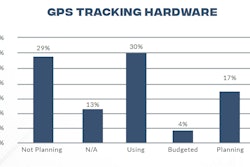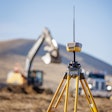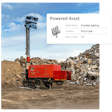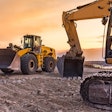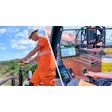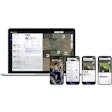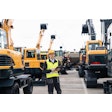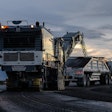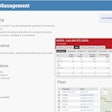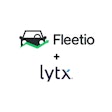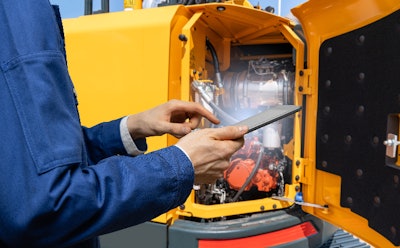
While some GPS-enabled asset management solutions are specific to construction equipment, Samsara is a case in point that a technology vendor that serves diverse industries can leverage research and development resources from that broader market while relying on partnerships to drive a fleet management solution deeper into construction business processes. On top of this, a horizontal fleet management solution will enable a contractor to wrap the solution around their over-the-road vehicles as well as off-road construction equipment. This is helpful for contractors transporting crews or equipment to job sites, as well as to companies visiting multiple sites a day for installation, service or repair to augment field service management software.
Going Public with IoT and GPS Technology
Bolstered by strength in applying internet of things (IoT) technology and GPS to the physical environment, Samsara went public in December of 2021. The company reported $714 million in revenue for the 12 months ending April 2023, and employs about 2,200. Publicly traded, Samsara insulates itself from recent instability in venture funding, and its broad industry approach protects it from ups and downs in specific industries.
According to its annual report, Samsara poured $187 million into research and development in the year ending April 2023, which is more than many of its construction-specific competitors’ annual total revenue. While these investments are not all specific to construction, much of the money is dedicated to Samsara’s industry-agnostic architecture and Connected Operations Cloud, which supports equipment monitoring and site visibility.
“It comes back to our overarching mission as a company,” Samsara Vice President of Product-Platform & Infrastructure Sean McGee said in our IRONPROS discovery call. “If you think about Samsara, we are trying to digitize world of physical operation and understand how equipment is being used. Workforce safety has become a major focus of ours—making sure our customers’ workers are safe.”
And in a world where machine learning is essential to improving an application’s performance over time, there is value in a very large and diverse customer base because while some aspects may be specific to a given industry, others are not.
“If you think about all the different product investments we are making at the moment, we are really starting to get to an extraordinary scale of data because of the scale of our customer base,” McGee said. “We are collecting data annually for all the vehicles and equipment on the network, and we think a lot about how we can leverage that data. We think about benchmarks—using that breadth of data relevant to other companies in their industry and size class.”
Samsara does not break up its staffing by industry, so there is no hard figure on sales or customer success staff specific to construction.
“We work with a wide variety of sizes of customers,” McGee said. “This might range from a smaller company that might have dozens of assets or employees up to the Fortune 500 with tens of thousands of employees or assets. We like to meet each customer type where they are—smaller customers are often looking for more of an out-of-the-box experience, and their customer success manager will help them get set up for success. Larger enterprise customers get a whole team including a dedicated customer success manager and implementation specialists that plot out a detailed plan for what the first six months with Samsara will look like. We also have technical specialists and a systems integrations team that will partner with IT departments at our larger customers and do systems integrations or customization projects.”
In-house hardware development has helped Samsara design sensors and devices for ease of installation, and many can be installed in 10-15 minutes with minimal skills. Many customers undertake installation themselves with an internal maintenance staff, while others rely on Samsara partners to equip their on-road vehicles and offroad equipment with tracking and telematics hardware.
Samsara Fleet Management Functionality
Since Samsara has been moving at a clip of about 200 new features every year, the company’s own updates will be the best source for all the product’s features. But at a high level, construction customers can look to Samsara for:
- GPS location with geofencing
- Telematics for construction equipment
- Video telematics for equipment operation monitoring and safety
Samsara hangs its hat to some extent on IoT technology—the company designs its own hardware internally, unlike many construction-specific vendors that white label sensor and telematics hardware from other companies. Thanks to this and overall product design, the methods Samsara offers to get data into their platform are robust, extending not only to its own sensors and telematics units but telematics units from major construction OEMs.
“Because we have an open data platform, there are really two ways we can consume data when it comes to heavy equipment,” Samsara Senior Technical Product Manager CJ Ramsey said. “The first will be from our own AG sensors—and within that we will use J1939 and any PTC information gets routed directly to the dashboard. The other piece which I see as the way of the future is cloud-to-cloud integration. All of the biggest and brightest heavy equipment manufacturers—John Deere, Komatsu, Caterpillar, Volvo—have created their own diagnostic clouds and their own subscription services for those diagnostic clouds. So rather than trying to reinvent the wheel, we figured we could leverage the idea of an open data platform to integrate that information directly.”
To this end, Samsara has direct integrations with:
- Volvo Construction AirTrack
- Caterpillar Visionlink
- John Deere JD link and JD Operations Center
- Komatsu My Komatsu
“This provides us with rich manufacturer data around default codes,” McGee said. “We are not having to create those libraries on the back end and try to interpret what the OEM is telling us.”
Samsara also does support the Association for Equipment Management Professionals (AEMP) asset data standard. For Samsara customers, this means they can view and manage operations and maintenance data on a mixed fleet in a single application … a lot of the features we build to see this data and work with it are completely interoperable between these different sources, so you are able to see that blended view across your assets in a way that is easy for folks to use.”
As equipment data flows into Samsara, users can do a number of things with it to add value to a construction operation.
“Typically, what we see with construction, is that Samsara is where fleet managers or safety managers in a lot of those organizations do a lot of coordination for field operations,” Samsara Senior Group Product Marketing Manager Martín Padilla said. “That might include coaching for on-road safety and ELD (electronic logging device) compliance.
Data in Samsara, regardless of whether it is captured by their proprietary gateways and cameras or accessed through integrations through application programming interfaces (APIs) standard integrations to feed data or trigger transactions in other systems including dispatch, payroll and maintenance. Pairing Samsara fault code data from an OEM application with software for maintenance work orders would enable, for instance, a given equipment condition to trigger a work order or even pull spares and repairs parts. Data on total drive time, off time and stops can automate upstream processes for payroll, eliminating manual processes that drive errors and sap organizational capacity.
Samsara will also often serve as the system of record for proof of service or actual time on site, which can eliminate time and effort lost in disputes with project stakeholders.
“There are ways to create workflows within Samsara—alerting system where you can set up as a user in a no code way identify conditions you want to monitor,” McGee said. “Maybe it is a fault code occurring on a certain type of day for certain pieces of equipment. You can route that follow-up action to someone on your team who is highly specialized and can take care of that problem.”
A true, modern, enterprise application should be agile enough to adapt to changing processes, and this is where the broader research and development resources of Samsara may be most apparent. This ability to create new workflows prevents value leakage as changing processes outstrip what the software has been configured for. Samsara’s strongest game in this area may be in its mobile application. A Samsara customer can use a no-code interface to create scripted field workforce-facing workflows, extending to tasks like:
- Filling out forms
- Adding photos
- Scanning bar codes
- Inspections
- Opening a process in a third-party application
Existing product partners include Esri, Clue Insights, Fleetio, Trimble TMT/Trimble Visibility, B2W Maintain, Fleet Cost & Care, Ready Mix Cloud and others. An integration to Procore is available through Zapier.
Samsara Tech Stack
Samsara reports thousands of customers and partners leveraging their APIs in various ways—evidence of an API-centric approach to the product. The multi-tenant software-as-a-service (SaaS) application resides on Amazon Web Services (AWS).
“Having built and run a lot of these systems, the way you use AWS or any of these top providers is equally if not more important than the service of the provider itself,” McGee said. “We have invested a lot from a Samsara perspective in quality controls and testing, continuous integration and continuous deployment (CI/CD) pipelines and real time monitoring. This is one more benefit of Samsara’s scale.”
The web application and mobile application layer are driven by React and React Native. While the Samsara tech stack relies on AWS as the environment where the application ingests a large amount of data, heavier big data processing is offloaded to Apache Spark. Open-source tools like Spark are vulnerable to security exploits as the community reports vulnerabilities, malicious actors can seize on that information to attack unpatched servers. While Samsara’s scale would suggest they have disciplined programs for patch management or enterprise licenses in place for the technology, a prospective customer may want to probe on this with Samsara during discussions were they security minded.
Samsara ships daily updates that customers can move into production at their discretion, enabling them to opt into beta releases while bug fixes and patches move on into production. Customers can even, according to McGee, make new features available to a specific set of users in advance of general rollout. Samsara’s deep technological resources also enable them to push updates over the air to their proprietary hardware, so customer devices always have the latest firmware.
Samsara Pricing and Market
Samsara is sold on a subscription model based on the type and number of devices used, with additional cost flowing from integrations, services projects, functionality leveraged, device types and installation services.
Most customers, according to the product management team, integrate Samsara with other software—with a typical large customer having six or more integrations.
While Samsara works with companies of all sizes, some things that make a construction company a more apt fit is a large, mixed fleet. The desire to address off-highway and unpowered assets into a single platform with over-the-road vehicles and safety and driver workforce data will also make Samsara more appealing.
BOTTOM LINE: While there are dedicated construction-specific fleet management solutions from companies like Trackunit, Tenna, Rooster, and Equipmentshare T3, Samsara adds best-in-class functionality for on-road vehicles to support both transport to and from jobs but field services management service calls. There are other horizontal fleet management solutions with a footprint in construction including Fleetio and Geotab, A construction enterprise looking for an enterprise-scale solution with heavy configurability should consider Samsara, with a next logical horizontal alternative being Geotab.



